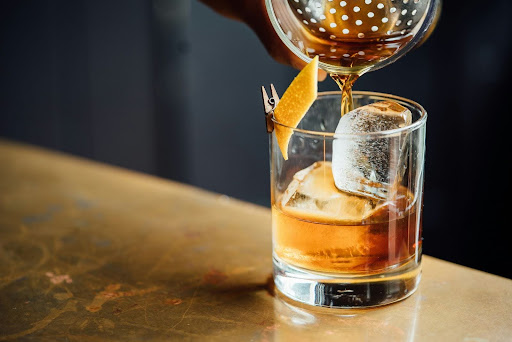2025 US Wine & Spirits Wholesaler Updates and Insights
In 2025, the United States’ wine and spirits sector is expected to see clear changes. Wine & spirits wholesaler updates have become increasingly important for industry participants to remain competitive as customer tastes change and technology develops quickly. This year offers amazing new perspectives on the US wine wholesale market as well as important distributor adjustments companies have to know if they want to survive and thrive.
Knowing the Current Landscape of US Wine & Spirits Wholesaler Markets
The US wine wholesale market will be stronger yet more dynamic in 2025 than it is now. Demand for premium, organic, and sustainable solutions by consumers is driving wholesalers to reevaluate their lines of business. Driven by consumer inclination for convenience and online buying experiences, e-commerce-driven distribution channels have seen especially explosive expansion.
Conversely, conventional wholesale arrangements are changing to fit modern advances. To increase productivity, many distributors increasingly use customer relationship management (CRM) systems and sophisticated inventory control tools. Furthermore, changing the competitive environment includes mergers and acquisitions among wholesalers, so retailers and brands must remain updated.
Important Distributor Changes for 2025
In the modern industry, maintaining distributor changes is quite vital. To increase their market share and simplify processes, some big companies have declared strategic mergers. For example, regional distributors are working together to challenge national leaders with customised service to customers and specialized portfolios.
Many distributors also now offer direct-to-consumer (DTC) products. Though state laws differ, the trend toward eliminating retail middlemen is becoming more frequent. By means of tailored experiences, this approach not only enhances margins but also promotes brand loyalty.
Moreover, industry norms are emerging from technologically driven logistics including smart contracts and blockchain for product identification. These instruments increase openness, lower fraud rates, and guarantee quicker, safer delivery, thus raising general client happiness

Main Trends Affecting Wine & Spirits Wholesaleers
Digital integration with e-commerce:
Investing extensively in digital channels, wholesalers let customers order, track shipments, and handle accounts online. These days, tastings and virtual trade events are accepted norms that enable companies to reach larger markets.
Focus on sustainability:
Eco-friendly habits, from carbon-neutral shipping to sustainable packaging, are essential. To satisfy customer demand, many distributors are aggressively looking for products that fit these ideals.
Success Strategies in the Changing US Wine & Spirits Wholesaler Market
Adapting to these wine & spirits wholesaler changes is essential for businesses, stores, and wineries. First, brand awareness can be much improved by forging close ties with distributors that value technology and sustainability. Second, in a cutthroat industry, matching product offers with present consumer trends, such as low-alcohol and non-alcoholic beverages, allows an advantage.
Stronger relationships can also result from data-sharing projects, including distributors. Real-time market data provides producers and distributors with the information they need to decide on marketing plans, pricing, and inventory levels. In these changing surroundings, individuals who are proactive rather than reactive will ultimately experience more success.
How Changing Distributors Affects New Market Entrants
For new players, the wave of distributor changes in 2025 offers both possibilities and problems. Fewer but more powerful distributors imply fiercer rivalry for store space on the one hand. Niche and speciality distributors, meanwhile, are generating chances for brands that appeal to particular markets, such as organic wines or craft spirits.
Smaller players are also appealing partners for emerging companies since they frequently provide more flexible terms and customized service. Many times, rather than pursuing alliances with industry heavyweights, new companies gain from matching with these dynamic distributors.

Final Thoughts
The 2025 US wine & spirits wholesaler updates and insights scene exposes a fast changing environment molded by technology, consumer expectations, and strategic distributor adjustments. Those who embrace digital transformation, sustainability, and creative business models, namely wholesalers and brands, will be positioned for success.
Future thinking needs both a fast strategy adaptation and trend tracking. Whether your business is retail, winery, or distribution, knowing these changes in the US wine wholesale market will help you to make wise, profitable decisions going forward.
FAQs
1. In the US wine & spirits wholesaler business, what are the main developments toward 2025?
Strong drives toward digital integration, sustainable practices, and direct-to-consumer methods define the main trends here.
2. What effects on the market have distributor changes brought about?
Technology developments and mergers between distributors have simplified processes, presenting benefits as well as obstacles for businesses wanting to guarantee distribution.
3. Among wholesalers, is direct-to-consumer selling starting to appeal more?
Though laws vary by state, several wholesalers are now using DTC channels to boost margins and client loyalty.
4. In 2025, how critical is sustainability to distributors of wine and spirits?
quite vital. Distributors want brands that give carbon-neutral logistics, organic ingredients, and environmentally friendly packaging top priority.
5. Given the distribution scene of today, how might new companies succeed?
New brands should concentrate on matching with niche distributors, embracing technology early, and serving growing consumer demands, such as low-alcohol beverages and premium organic items.
